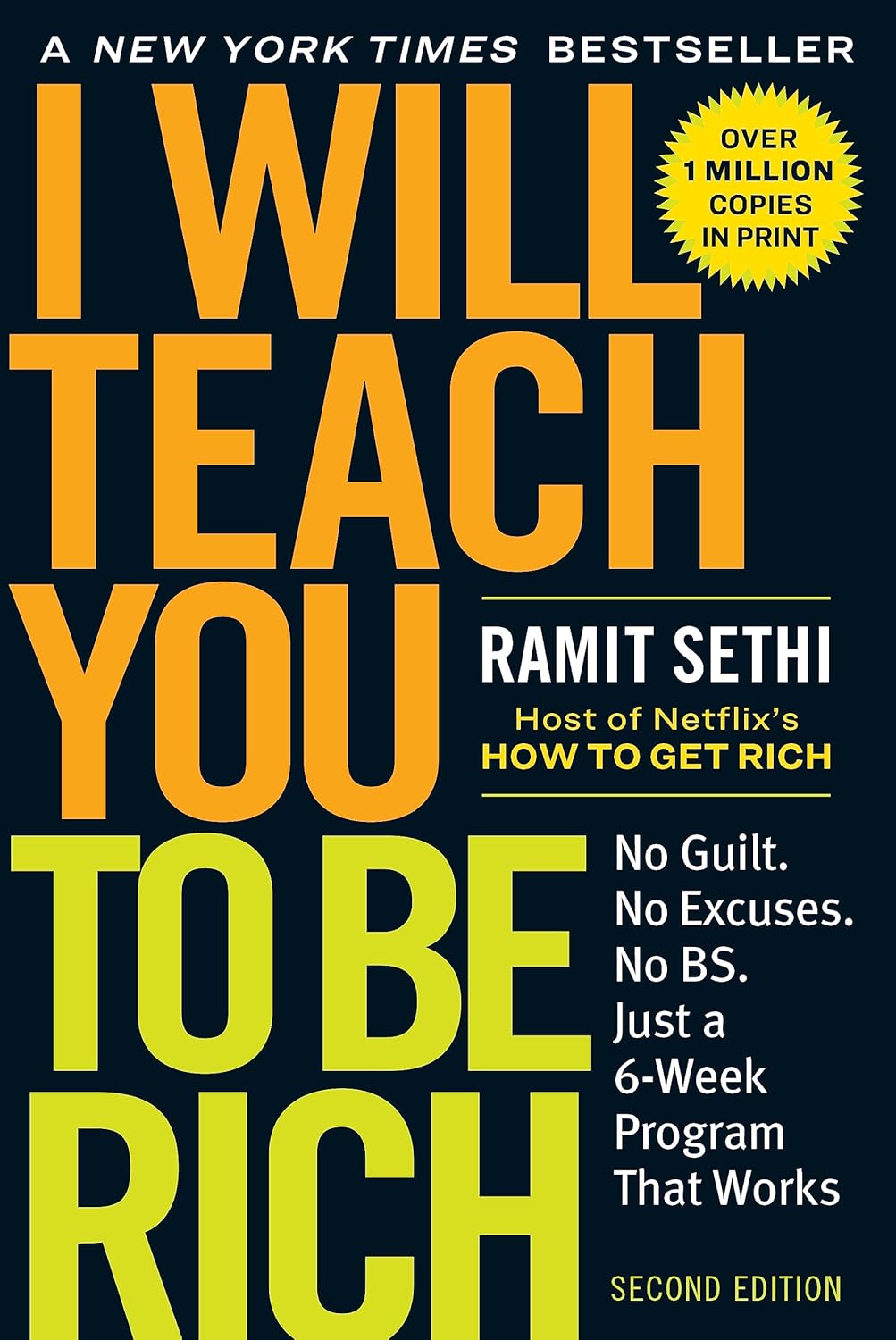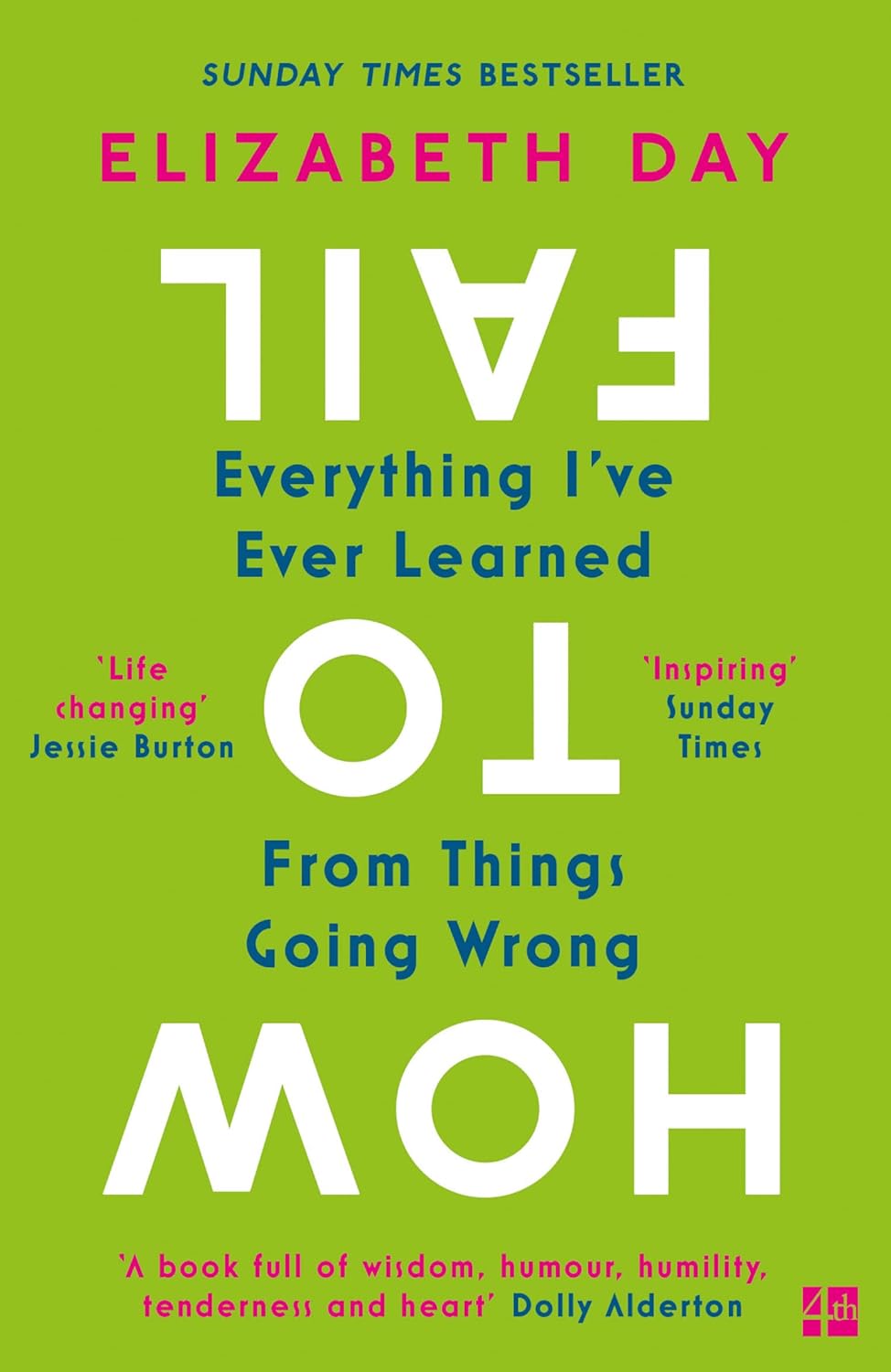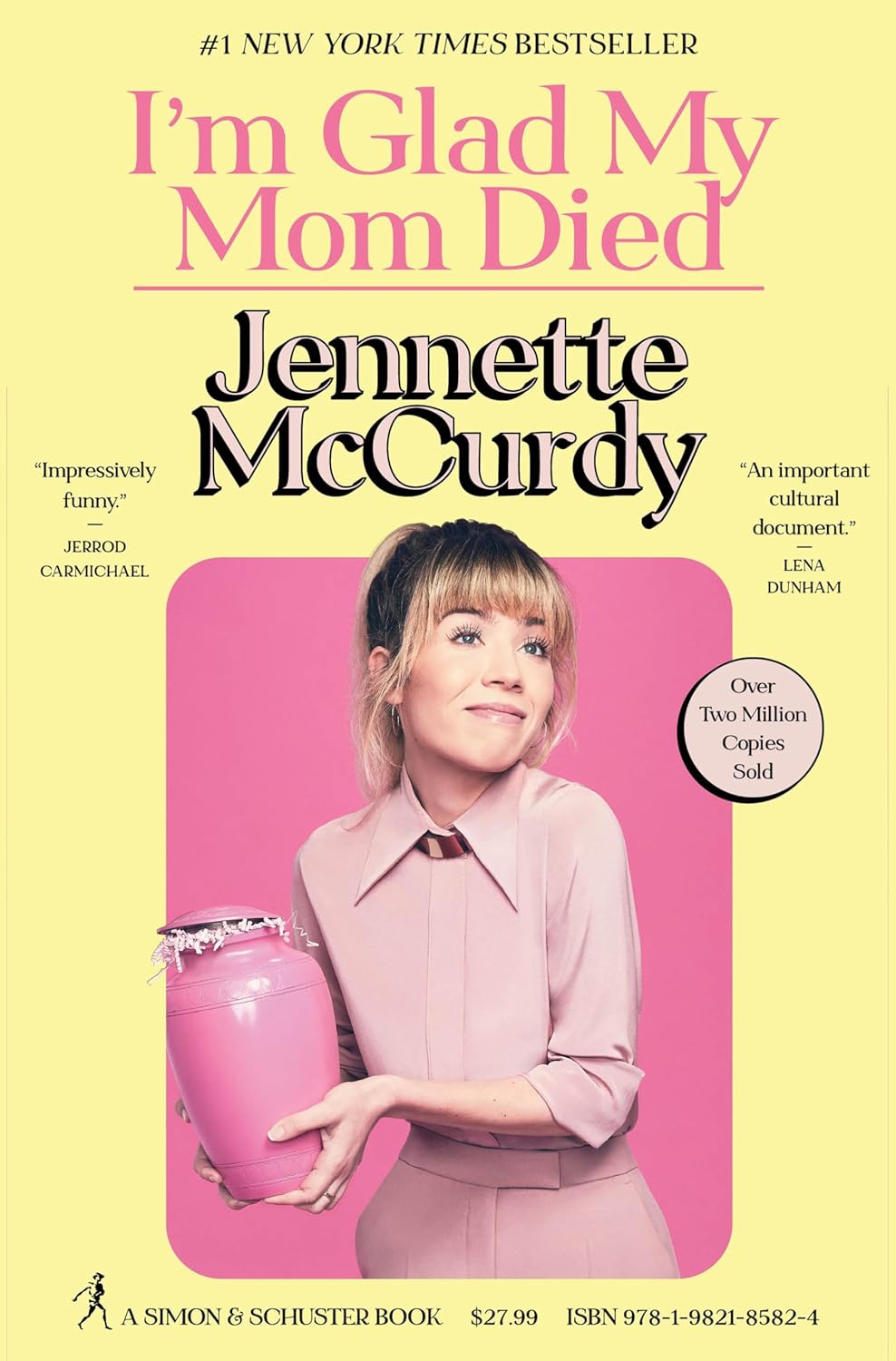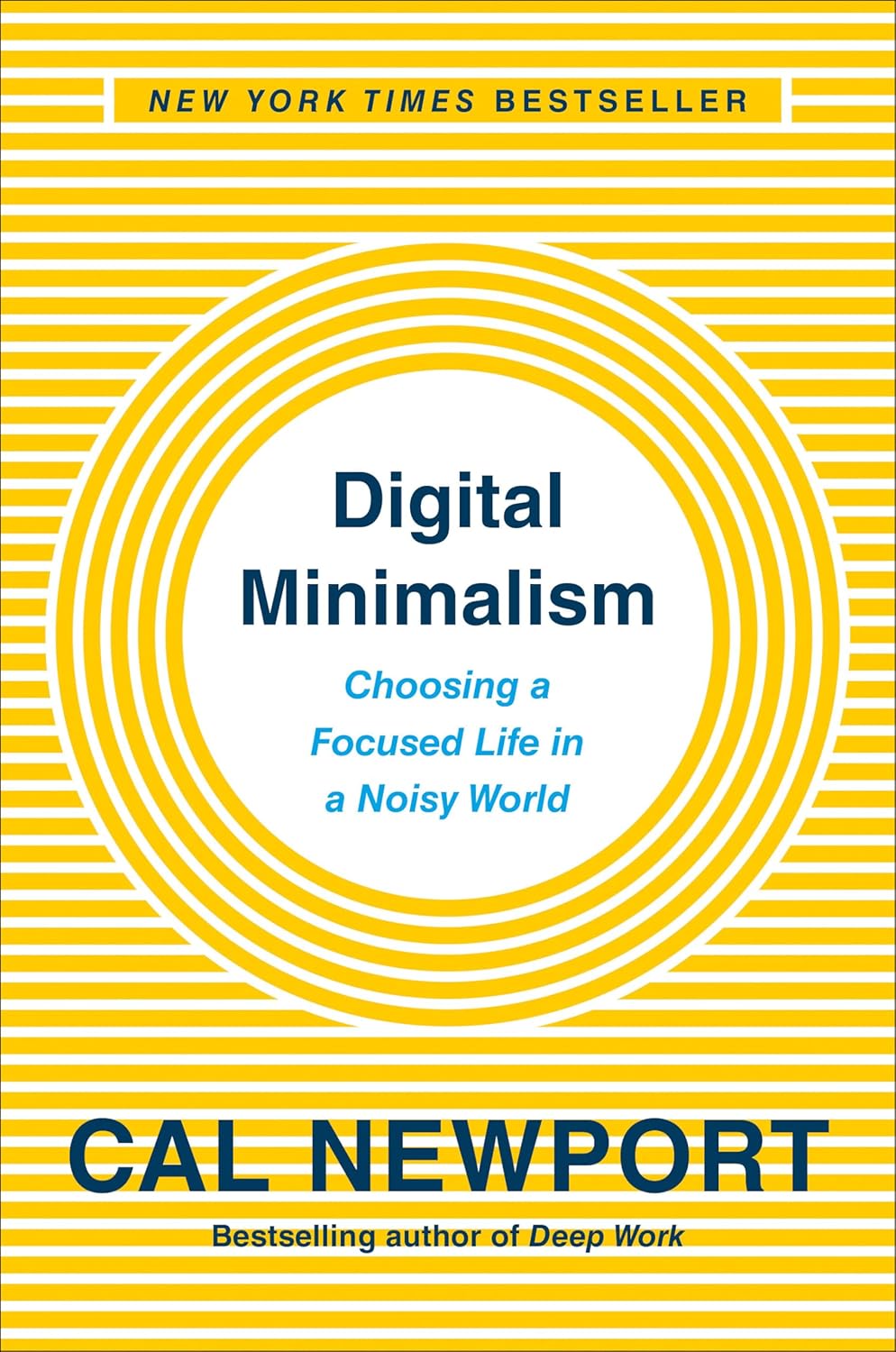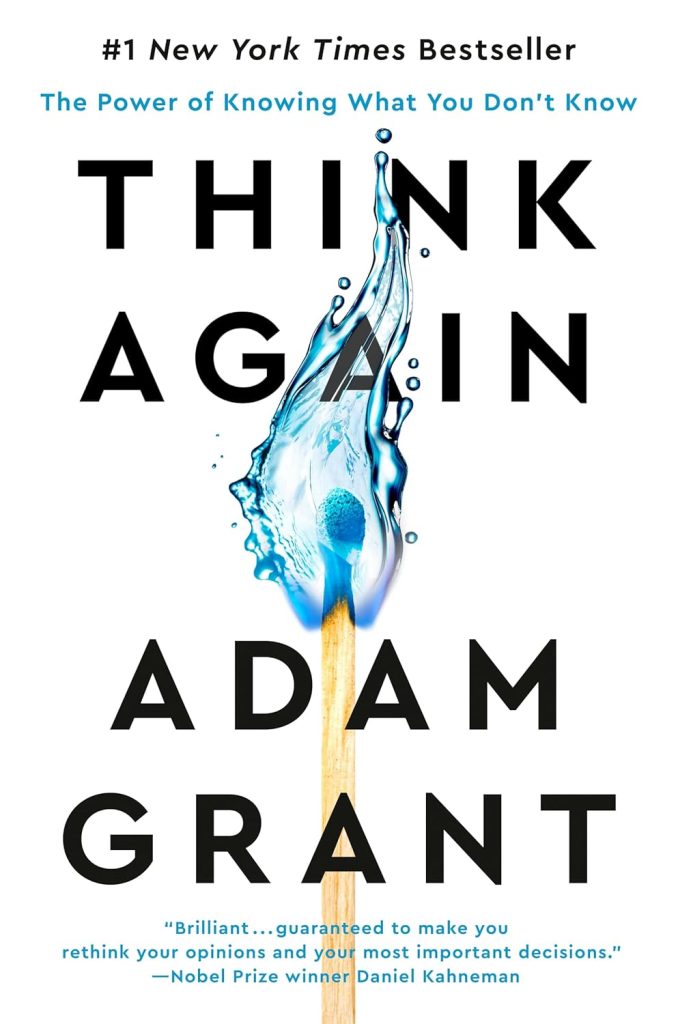
Buy The Book
Chapter
- Part I. Individual Rethinking – Updating Our Own Views
- ✦ Chapter 1. A Preacher, a Prosecutor, a Politician, and a Scientist Walk into Your Mind
- ✦ Chapter 2. The Armchair Quarterback and the Impostor: Finding the Sweet Spot of Confidence
- ✦ Chapter 3. The Joy of Being Wrong: The Thrill of Not Believing Everything You Think
- ✦ Chapter 4. The Good Fight Club: The Psychology of Constructive Conflict
- Part II. Interpersonal Rethinking – Opening Other People’s Minds
- ✦ Chapter 5. Dances with Foes: How to Win Debates and Influence People
- ✦ Chapter 6. Bad Blood on the Diamond: Diminishing Prejudice by Destabilizing Stereotypes
- ✦ Chapter 7. Vaccine Whisperers and Mild-Mannered Interrogators: How the Right Kind of Listening Motivates People to Change
- Part III. Collective Rethinking
- ✦ Chapter 8. Charged Conversations: Depolarizing Our Divided Discussions
- ✦ Chapter 9. Rewriting the Textbook: Teaching Students to Question Knowledge
- ✦ Chapter 10. That’s Not the Way We’ve Always Done It: Building Cultures of Learning at Work
- Part IV. Conclusion
- ✦ Chapter 11. Escaping Tunnel Vision: Reconsidering Our Best-Laid Career and Life Plans
Think Again: The Power of Knowing What You Don’t Know

About
Adam Grant, an organizational psychologist at Wharton, challenges the conventional wisdom of unwavering conviction in “Think Again.” In this book, Grant argues that the ability to rethink and unlearn is a crucial skill for navigating a rapidly changing world.
He explores the cognitive processes that hinder our ability to change our minds, introducing the concepts of “preacher,” “prosecutor,” “politician,” and “scientist” modes of thinking. Grant champions the “scientist” mindset, emphasizing intellectual humility, curiosity, and the willingness to revise beliefs in the face of new evidence.
“Think Again” provides practical strategies for fostering open-mindedness, engaging in constructive conflict, and building learning organizations. By embracing the joy of being wrong and detaching our identities from our opinions, Grant suggests, we can become more adaptable, innovative, and successful in both our personal and professional lives.

Spark
Learn
Review
Part I. Individual Rethinking – Updating Our Own Views
✦ Chapter 1. A Preacher, a Prosecutor, a Politician, and a Scientist Walk into Your Mind
Mike Lazaridis’s story serves as a cautionary tale about the perils of clinging to outdated beliefs. Though a science prodigy and the mind behind BlackBerry’s initial success, his reluctance to rethink key assumptions ultimately contributed to the company’s downfall. It highlights a critical tension: while conviction is often valued, a rapidly changing world demands a willingness to rethink and unlearn.
Thinking styles get explored through the lens of three distinct figures: the preacher, the prosecutor, and the politician. When sacred beliefs are challenged, we often enter preacher mode, defending ideals and proselytizing. Recognizing flaws in others’ reasoning can trigger prosecutor mode, where arguments get marshaled to prove others wrong. Seeking approval prompts politician mode, campaigning for validation and support. The danger lies in becoming trapped in these modes, neglecting to examine one’s own views.
In contrast, the scientist embodies a different approach. This is someone constantly aware of the limits of understanding, curious about the unknown, and willing to update views based on new evidence. This mindset involves searching for truth, experimenting to test hypotheses, and discovering knowledge. It’s a frame of mind accessible to all, not just those in white coats.
The evidence illustrates that embracing a scientist’s approach can lead to more innovative and adaptable outcomes. Startups that adopt a scientific thinking approach, treating their strategies as theories and their products as experiments, are more likely to pivot and generate revenue. This underscores how essential intellectual curiosity and humility are, especially in the face of rapidly evolving realities.
The chapter concludes by underscoring that mental agility comes from striking down long held assumptions, which can make us vulnerable. It emphasizes the importance of cultivating a scientist’s mindset, remaining actively open-minded, and revising views based on learning. Intelligence alone is insufficient; the motivation to rethink is crucial.
✦ Chapter 2. The Armchair Quarterback and the Impostor: Finding the Sweet Spot of Confidence
This part explores two contrasting syndromes: the “armchair quarterback” and the “impostor.” The armchair quarterback exhibits excessive confidence relative to their actual competence, while the impostor possesses competence exceeding their confidence. Understanding these syndromes aids in recognizing cognitive blind spots and fosters more accurate self-perception.
It introduces Anton’s syndrome, a neurological condition where individuals are oblivious to their physical disabilities, and draws a parallel to cognitive blind spots that impede self-awareness and hinder rethinking. The exploration of gender differences in self-assessment reveals that women often underestimate their leadership skills, while men tend to overestimate theirs, which leads to the concept of the Dunning-Kruger effect. This effect suggests that those with limited competence are prone to overconfidence.
It will discuss how the Dunning-Kruger effect compromises self-awareness, affecting various settings. The analysis extends to management practices across industries and countries, noting that overconfidence is prevalent where management quality is poorest. This explores feigned knowledge and suggests that people with inflated self-perceptions tend to overestimate their knowledge and are less inclined to learn or update their beliefs. Absolute beginners rarely fall into the Dunning-Kruger trap because their limitations are apparent to them.
The problem with armchair quarterback syndrome is that it prevents rethinking. When individuals are certain of their knowledge, they are less likely to identify gaps or correct errors. A deficiency in metacognitive skill, the ability to reflect on one’s thinking, clouds the vision of one’s abilities. It is when people progress from novice to amateur that they become overconfident. The remedy for remaining on Mount Stupid is to take a regular dose of it. The antidote to getting stuck on Mount Stupid is taking a regular dose of it. Humility is about being grounded, which involves the recognition of flaws and fallibility.
Finally, it highlights the concept of confident humility, emphasizing belief in one’s capabilities coupled with the recognition of potential flaws and limitations. Confident humility fosters openness to rethinking, improves the quality of rethinking, and results in innovative teams.
✦ Chapter 3. The Joy of Being Wrong: The Thrill of Not Believing Everything You Think
The comfort found in being right often overshadows the potential for growth and learning. A personal anecdote illustrates the initial resistance to admitting mistakes, contrasting with the transformative power of embracing fallibility. The chapter then highlights the concept of the “totalitarian ego,” an internal defense mechanism that shields us from information challenging our core beliefs. It discusses how this mechanism, while intended to protect our self-image, can hinder intellectual progress by creating filter bubbles and echo chambers.
Then Nobel laureate Daniel Kahneman’s enthusiasm for discovering his own errors is presented as an example of how one can find joy in being wrong. The key, it seems, is detaching one’s present self from past beliefs and separating opinions from identity. Values, rather than rigid ideologies, are proposed as the foundation for a more flexible sense of self.
The chapter delves into the realm of superforecasters, individuals skilled at predicting future events. Their success is attributed less to intelligence than to their willingness to update their beliefs frequently. The ability to question assumptions, seek disconfirming evidence, and treat opinions as tentative hunches are identified as crucial traits.
Stories are presented of individuals who have embraced mistakes as opportunities for learning, underscoring the importance of intellectual humility and openness to revision. One is encouraged to examine the conditions that would prove their opinions false, actively seeking evidence that challenges their views.
It is highlighted that admitting mistakes, even publicly, can enhance credibility by demonstrating honesty and a willingness to learn. The chapter concludes by contrasting this open-mindedness with the rigidity of Ted Kaczynski, the Unabomber, whose inability to question his convictions led to destructive actions. The core message is that intellectual growth hinges on embracing the joy of being wrong, recognizing it as a path to becoming less wrong over time.
✦ Chapter 4. The Good Fight Club: The Psychology of Constructive Conflict
This section delves into the contrasting dynamics of relationship conflict and task conflict. Relationship conflict, characterized by personal and emotional clashes, proves detrimental to team performance. In contrast, task conflict, involving disagreements about ideas and opinions, can be beneficial. A lack of conflict can lead to apathy.
Personal and emotional clashes impede rethinking, causing individuals to entrench themselves in their viewpoints. Task conflict, by introducing diverse perspectives, fosters humility and fuels curiosity, leading to a willingness to reconsider assumptions.
The author reveals that many individuals lack the ability to engage in productive disagreements, often stemming from a desire to shield children from conflict. Research indicates that the manner in which parents argue, rather than the frequency, shapes a child’s emotional development. Constructive parental conflict nurtures empathy and compassion in children.
Furthermore, the capacity for healthy debate cultivates creativity. Studies suggest that highly creative individuals often come from backgrounds where friction was present, developing the courage to advocate for their ideas and the resilience to navigate disagreements.
The Wright brothers exemplify the power of constructive conflict. They thrived on debate, engaging in prolonged arguments to solve problems and challenge assumptions. Their success underscored the importance of fighting for ideas, crucial for rethinking critical assumptions and achieving breakthroughs. The section highlights the importance of cultivating productive fights to facilitate innovation and personal growth.
Part II. Interpersonal Rethinking – Opening Other People’s Minds
✦ Chapter 5. Dances with Foes: How to Win Debates and Influence People
This section examines strategies for productive disagreement, particularly how to win arguments and influence others. Instead of viewing debates as battles, it proposes approaching them as dances, where the goal is to move together towards a better understanding.
A critical insight revolves around recognizing that persuasion isn’t about overpowering opponents, but about opening their minds. This starts with understanding their perspectives and finding common ground. Rather than launching into direct opposition, begin by listening actively and acknowledging points of agreement, building a foundation of trust and rapport.
One effective technique is to ask questions that guide the other person towards recognizing the flaws in their reasoning. This method, inspired by Socrates, encourages self-discovery rather than imposing beliefs. Emphasizing learning and exploration over outright victory can disarm defensiveness and foster receptiveness to new ideas.
Another powerful tool is to highlight areas where views overlap. By acknowledging shared values or goals, even amidst disagreement, it becomes possible to create a space for constructive dialogue. This involves understanding the other person’s motives and demonstrating that changing their mind wouldn’t require abandoning their core principles.
Acknowledging complexities and uncertainties is also essential. Presenting a nuanced perspective, rather than absolute certainty, can make arguments more persuasive. People are more likely to be swayed by someone who recognizes the limitations of their own knowledge and is open to considering alternative viewpoints. Intellectual humility fosters an environment conducive to rethinking and mutual learning.
Ultimately, skillful persuasion entails empathy, active listening, and a genuine desire to bridge divides. By reframing debates as opportunities for collaboration and understanding, it becomes possible to navigate disagreements constructively and influence others without resorting to adversarial tactics. The goal is to dance together, not to defeat a foe.
✦ Chapter 6. Bad Blood on the Diamond: Diminishing Prejudice by Destabilizing Stereotypes
This part explores prejudice and dismantling harmful stereotypes. Prejudice is a pre-judgment, premature conclusion based on incomplete or inaccurate information. Stereotypes are problematic when they are blanket statements about entire groups. These stereotypes solidify into beliefs, blinding individuals to diversity.
One strategy for combating prejudice is to expose flaws within stereotypes, which crumble when confronted with individual exceptions. Recognize the differences are often exaggerated, and individuals within any group vary.
Meaningful contact between members of different groups can reduce prejudice, but simply putting people from different backgrounds together isn’t enough. It needs to foster cooperation towards shared goals, ensure equal status among participants, and create opportunities for personal connection.
Sports teams provide a setting for constructive contact. When athletes work together towards a common victory, stereotypes are challenged, and prejudice diminishes. It helps to appreciate contributions of each teammate, transcending differences.
It cautions that sports aren’t a solution. If the team environment reinforces inequalities or fosters competition, prejudice can worsen. The key is to create a team culture that celebrates diversity, promotes inclusivity, and emphasizes shared success.
Dismantling prejudice requires questioning assumptions, challenging stereotypes, and embracing complexity of human identity. By creating opportunities for connection and celebrating individual differences, it becomes possible to build a more inclusive society. Moving beyond prejudice allows us to see each other and allow each other to thrive.
✦ Chapter 7. Vaccine Whisperers and Mild-Mannered Interrogators: How the Right Kind of Listening Motivates People to Change
This part explores effective communication strategies for encouraging others to reconsider their beliefs, focusing particularly on the challenge of addressing vaccine hesitancy. Direct confrontation and forceful arguments often backfire, strengthening resistance rather than fostering open-mindedness. Instead, the most successful approaches center on empathetic listening and skillful questioning.
It highlights the importance of understanding the underlying motivations and concerns driving resistance. Rather than dismissing fears as irrational, acknowledging their validity and exploring them with curiosity can build trust and create space for dialogue. Skilled communicators adopt a stance of humility, recognizing that they don’t have all the answers and are open to learning from others.
One effective technique is to ask open-ended questions that encourage self-reflection. Instead of presenting facts and figures, guide individuals to examine their own reasoning and identify inconsistencies or gaps in their knowledge. This approach, known as motivational interviewing, empowers people to arrive at their own conclusions, making them more likely to embrace change.
Another powerful strategy is to share personal stories and experiences. Narratives can be more persuasive than statistics, as they connect with emotions and create a sense of shared humanity. Sharing stories of vaccine successes, while acknowledging potential risks, can be particularly effective in addressing fears and anxieties.
The author reveals that effective listening involves paying attention not only to what people say, but also to how they say it. Recognizing nonverbal cues and emotional undertones can provide valuable insights into their perspectives and help to tailor communication accordingly. The author concludes that ultimately, fostering open-mindedness requires empathy, patience, and a genuine desire to understand others’ viewpoints. The focus is on building bridges, not erecting walls, and creating an environment where rethinking is welcomed rather than feared. The goal is to guide people towards making informed decisions based on their values and beliefs.
Part III. Collective Rethinking
✦ Chapter 8. Charged Conversations: Depolarizing Our Divided Discussions
This section explores how to navigate highly charged conversations and depolarize divided discussions. The current climate is marked by increasing division, where disagreements can easily escalate into personal attacks and fractured relationships. Bridging these divides requires understanding the psychological forces at play and employing strategies to foster more constructive dialogue.
One central idea is the importance of recognizing the complexity of issues. Avoid simplifying complex topics into binary choices, which can reinforce polarization. Nuance allows for a more accurate reflection of reality and makes room for common ground. Rather than focusing solely on differences, search for shared values and goals, building bridges based on mutual understanding.
Another crucial strategy is to acknowledge the legitimacy of opposing viewpoints. Even when disagreeing strongly with someone, validate their experience and perspective. This doesn’t mean condoning harmful views, but it can help lower defensiveness and create an environment where people are more open to rethinking their positions.
It underscores the power of curiosity. Instead of entering conversations with the goal of persuading others, approach them with a genuine desire to learn. Ask open-ended questions, listen attentively, and seek to understand the reasoning behind different beliefs. This curiosity can help to uncover common ground and create a space for constructive dialogue.
The author explains that sharing personal stories and vulnerabilities fosters empathy and connection. When people understand the human experiences that shape different perspectives, it becomes easier to bridge divides. He also suggests that role-modeling humility can encourage others to reconsider their stances. Acknowledge uncertainties and demonstrate a willingness to change your own mind in light of new information.
Ultimately, depolarizing divided discussions requires a shift in mindset. It’s a move away from viewing conversations as battles to be won and towards seeing them as opportunities for mutual learning and understanding. By fostering empathy, curiosity, and humility, we can create a more inclusive and constructive dialogue.
✦ Chapter 9. Rewriting the Textbook: Teaching Students to Question Knowledge
This part examines the role of education in fostering critical thinking and open-mindedness. It challenges the traditional model of education as the transmission of fixed knowledge, instead advocating for a more dynamic approach that encourages students to question, explore, and rethink.
One of the core issues addressed is the way textbooks often present information as absolute truth, stifling curiosity and discouraging students from engaging in deeper inquiry. To counter this, the section proposes strategies for “rewriting the textbook,” encouraging students to critically analyze information, identify biases, and consider alternative perspectives.
One promising approach involves turning classrooms into museums, where students actively curate and interpret exhibits, fostering a sense of ownership and investment in the learning process. This also means creating environments where students are encouraged to challenge existing narratives and construct their own understanding of the material.
The author reveals that traditional teaching methods can be reimagined. Project-based learning, for instance, can be approached like carpentry, with students actively building and refining their knowledge through hands-on experience. The focus shifts from memorization to application, problem-solving, and collaboration.
One important point of consideration is on how to develop a generation that is prepared to challenge conventional wisdom. It goes through the need to equip them with the skills to adapt to a rapidly changing world. This would involve instilling intellectual humility, encouraging curiosity, and fostering a love of learning.
By shifting the focus from knowledge acquisition to knowledge creation, education can become a powerful force for innovation and progress. Learning institutions would need to become incubators for critical thinkers, empowering students to shape their own future and contribute meaningfully to society. It emphasizes how the key is not just learning what to think, but learning how to think.
✦ Chapter 10. That’s Not the Way We’ve Always Done It: Building Cultures of Learning at Work
This section examines how organizations can foster a culture of continuous learning and improvement. The common refrain of “that’s how we’ve always done it” is often a barrier to progress, stifling innovation and adaptability. Cultivating a learning environment requires a shift in mindset, encouraging employees to question existing practices, experiment with new approaches, and openly share both successes and failures.
One pivotal aspect is psychological safety, where individuals feel comfortable voicing concerns, raising dissenting opinions, and admitting mistakes without fear of punishment or ridicule. Leaders play a crucial role in establishing this safety net by modeling vulnerability, actively soliciting feedback, and celebrating learning over simply achieving results.
Learning culture involves creating systems and processes that facilitate knowledge sharing and reflection. This can involve implementing after-action reviews to analyze project outcomes, establishing communities of practice to connect individuals with shared interests, and providing dedicated time for experimentation and exploration.
A central theme is the importance of embracing failure as a learning opportunity. Rather than assigning blame, organizations can analyze setbacks to identify systemic issues and implement corrective measures. This requires fostering a growth mindset, where individuals view challenges as opportunities to develop new skills and knowledge.
Furthermore, cultivating a learning culture entails promoting intellectual humility, recognizing that no one has all the answers and encouraging continuous curiosity. Organizations can support this by providing access to training and development resources, encouraging cross-functional collaboration, and celebrating intellectual exploration. By prioritizing learning and adaptation, organizations can enhance their resilience, responsiveness, and overall performance in an increasingly dynamic world. The journey involves moving beyond comfort zones and cultivating environment open to rethink.
Part IV. Conclusion
✦ Chapter 11. Escaping Tunnel Vision: Reconsidering Our Best-Laid Career and Life Plans
This section challenges the conventional wisdom of sticking to long-term goals, urging a reassessment of deeply held career and life plans. The pursuit of a singular, predetermined path can lead to tunnel vision, limiting exposure to new opportunities and hindering adaptability.
A central theme is the importance of embracing optionality and experimentation. Rather than rigidly adhering to a fixed plan, consider a more flexible approach that allows for exploration and adjustments based on evolving interests and circumstances. This involves developing a diverse range of skills and experiences, creating a broader foundation for future possibilities.
The idea is to recognize that interests and passions can change over time. What once seemed like a dream job or a perfect life path may lose its appeal or become less fulfilling as new information and experiences emerge. Being open to rethinking those initial aspirations allows for the discovery of more aligned and satisfying pursuits.
One effective strategy is to view career and life plans as hypotheses to be tested rather than commitments to be fulfilled. This involves setting specific goals and timelines, but also remaining open to revising those goals as new evidence emerges. The key is to gather data and insights, and to use that information to make informed decisions about whether to continue on the current path or to pivot in a new direction.
Also, reflecting on past experiences and identifying patterns in our interests and values helps to gain clarity about what truly matters. This involves examining previous successes and failures, identifying what aspects of those experiences were most enjoyable and fulfilling, and using those insights to inform future choices.
Ultimately, escaping tunnel vision requires a willingness to question assumptions, challenge conventions, and embrace uncertainty. The most successful individuals are often those who are open to rethinking their plans, adapting to change, and pursuing new opportunities that align with their evolving selves. The conclusion is not to abandon planning altogether, but to approach it with flexibility, curiosity, and a willingness to think again.
For People
– Leaders
– Managers
– Educators
– Negotiators
– Anyone facing complex decisions
Learn to
– Adaptability
– Innovation
– Intellectual Humility
– Improved Communication
– Enhanced Decision-Making





